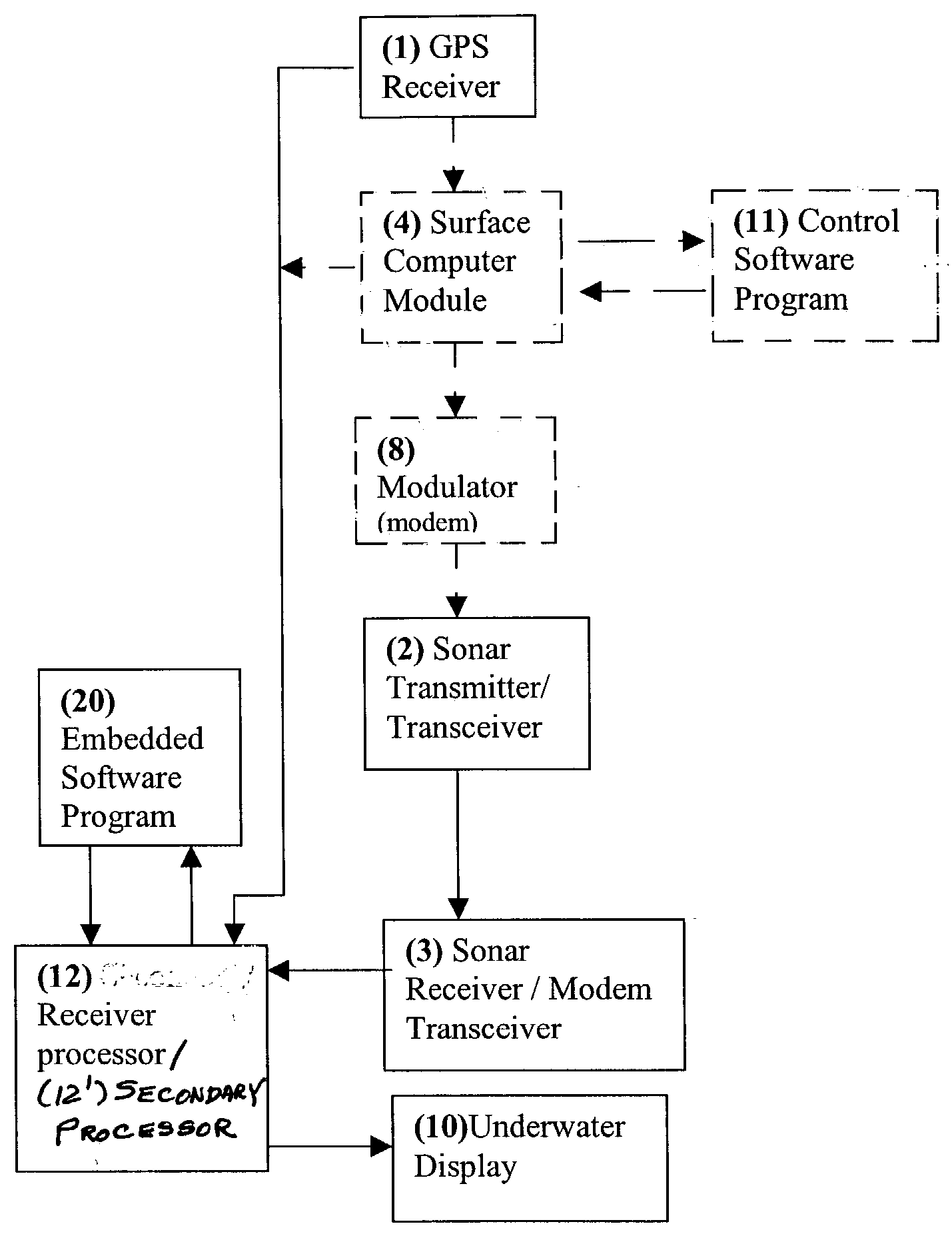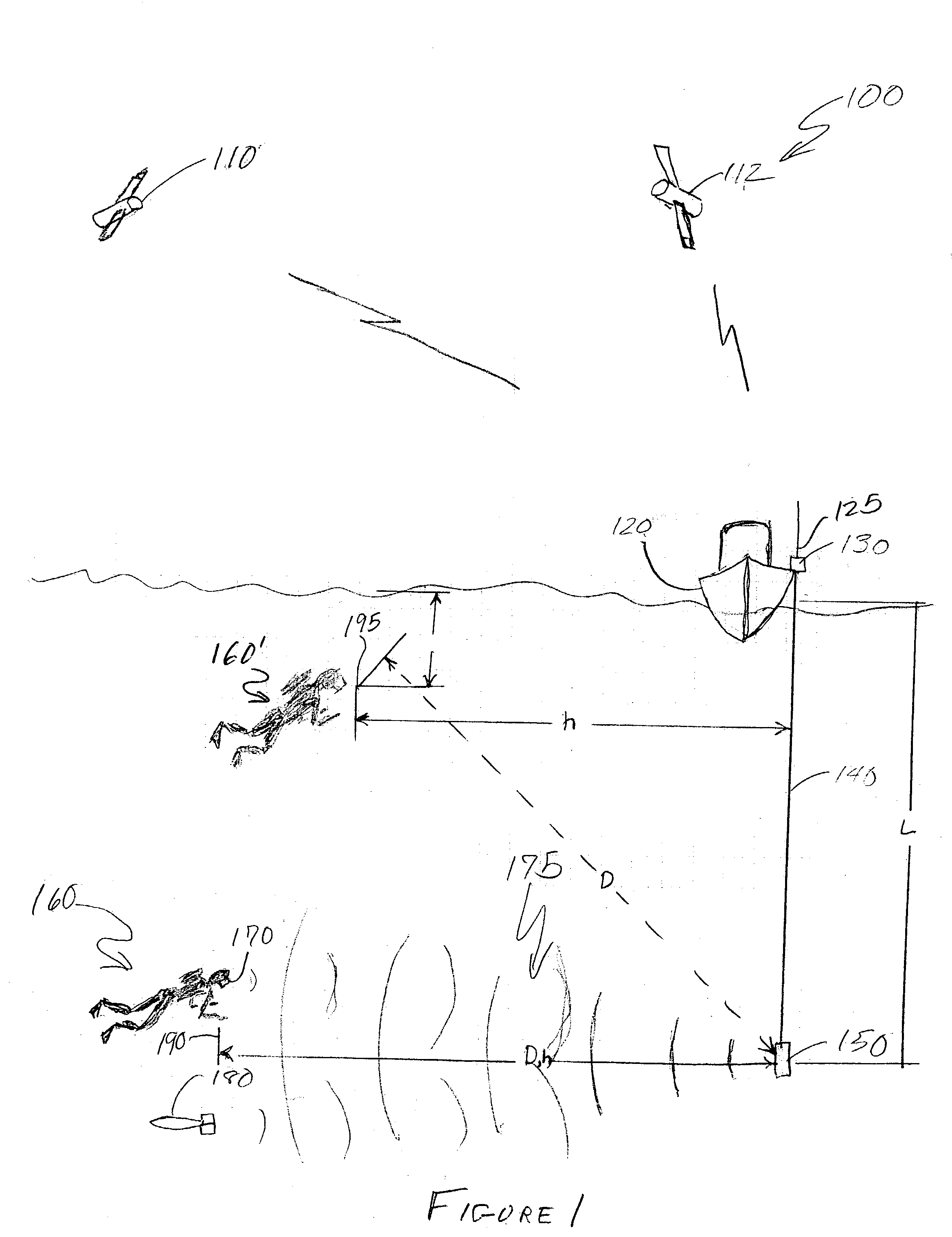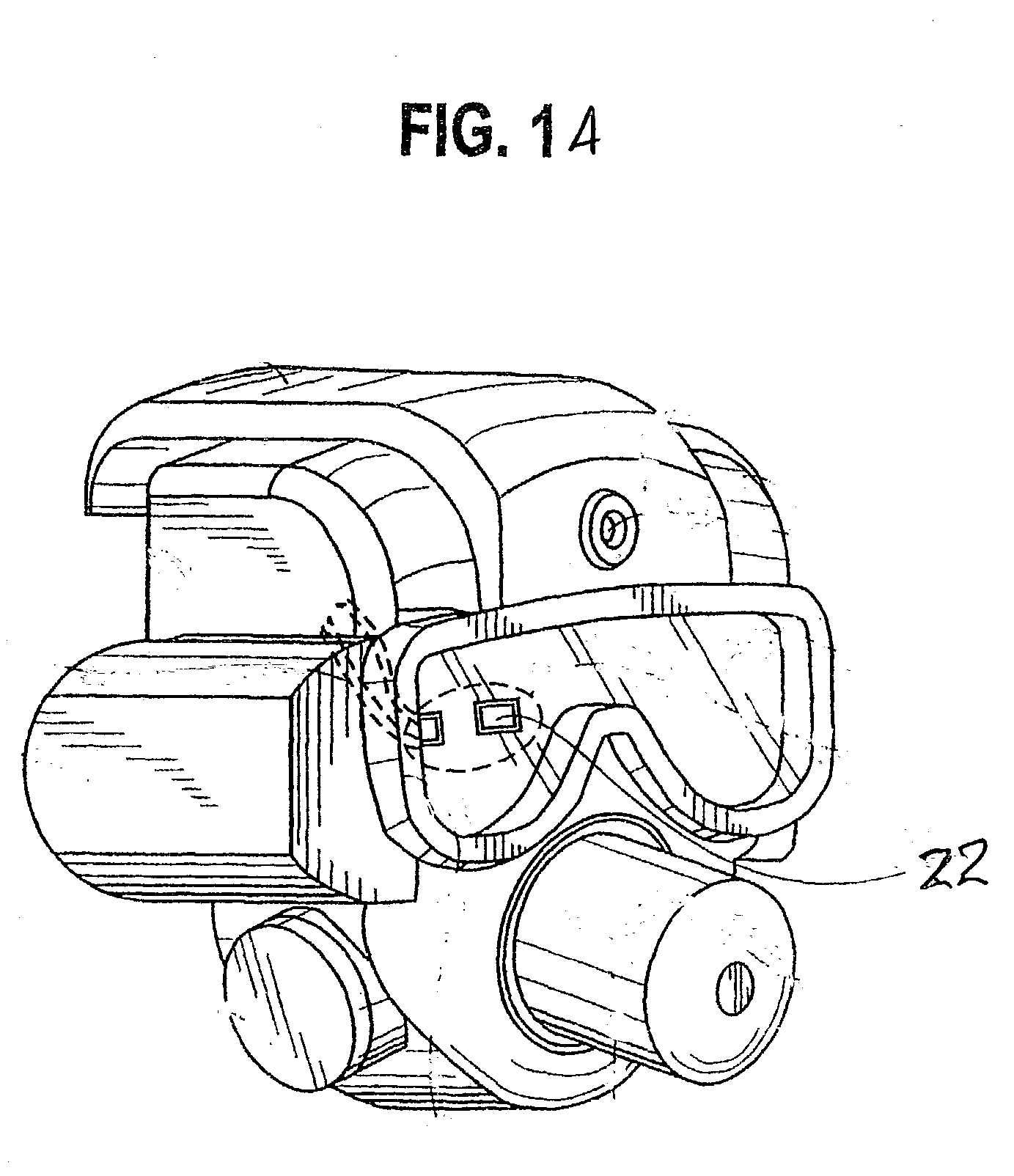Method for determining, recording and sending GPS location data in an underwater environment
- Summary
- Abstract
- Description
- Claims
- Application Information
AI Technical Summary
Benefits of technology
Problems solved by technology
Method used
Image
Examples
first embodiment
[0020] First Embodiment
[0021] Referring now to FIG. 2, a first embodiment of the invention will be discussed to convey an understanding of the basic principles of the invention sufficient to its successful practice. In the simplest form of this embodiment, a GPS receiver 1 is mounted on a boat preferably as discussed above in connection with FIG. 1. A small computer (e.g. surface computer module 4 and control software program 11) may be connected to the GPS receiver but is not necessary in the simplest form of the invention. A modulator 8 may be connected to the computer. A sonar transmitter 2 is provided and may be connected to the modulator 8. A diver or vehicle is in the water and preferably attached to a sonar receiver 3 associated with a receiver processor 12 and an embedded software program 20 which provides ranging data as in the EyeSee.TM. system described above and the combining of the ranging data with the GPS data input to processor 12 form GPS receiver 3 or otherwise as ...
embodiment three
[0031] Embodiment Three
[0032] In this more complex embodiment illustrated in FIG. 4, the basic hardware configuration described in Embodiment One (FIG. 2) and / or Embodiment Two (FIG. 3) is augmented for increased functionality. The sonar transmitter 2 connected to the support vessel is pre-selected to broadcast of a first channel such as at Frequency A and is thus designated 2A. The sonar receiver 3, attached to the diver or vehicle is preselected and filtered to receive only Frequency A transmissions (also used as the sonar communication link for ranging) and thus designated 3A. A demodulator 18 is connected to the sonar receiver (for its input) and the secondary processor 12' (for its output) and preferably residing on the sonar receiver 3A attached to the diver or vehicle.
[0033] A modulator 8B is connected to the secondary processor 12' which is attached to the diver or vehicle. A sonar transmitter 2B preselected to broadcast on a second channel such as at Frequency B is connecte...
embodiment
[0040] Embodiment Four
[0041] Many physical factors can contribute to error in the distance and direction calculations being performed by the processor 12, 12' and, as such, may introduce fundamental errors that affects ultimate GPS location calculation. For example, referring to FIG. 1, the sonar ranging described above reflects a distance D which may be at any angle above or below the depth of the transmitter as illustrated by the different positions of divers 160 and 160' which are the same distance from transmitter 150 but at different horizontal distances h parallel to the plane of sonar transmitter 150 and thus at different geographically referenced locations. Further, the measurement of distance D is subject to error due to variations in salinity, temperature or any other parameter that affects the propagation speed of the sonar signal. This embodiment, illustrated in FIG. 5, introduces additional sophistication to the system described in the above embodiments in order to quan...
PUM
 Login to View More
Login to View More Abstract
Description
Claims
Application Information
 Login to View More
Login to View More - R&D
- Intellectual Property
- Life Sciences
- Materials
- Tech Scout
- Unparalleled Data Quality
- Higher Quality Content
- 60% Fewer Hallucinations
Browse by: Latest US Patents, China's latest patents, Technical Efficacy Thesaurus, Application Domain, Technology Topic, Popular Technical Reports.
© 2025 PatSnap. All rights reserved.Legal|Privacy policy|Modern Slavery Act Transparency Statement|Sitemap|About US| Contact US: help@patsnap.com



